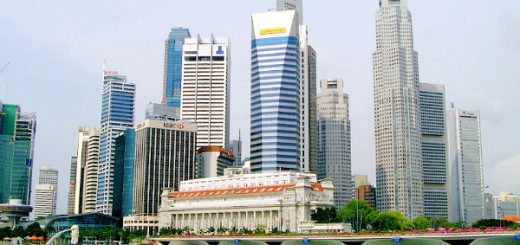Chester, Ludlow and Cardiff
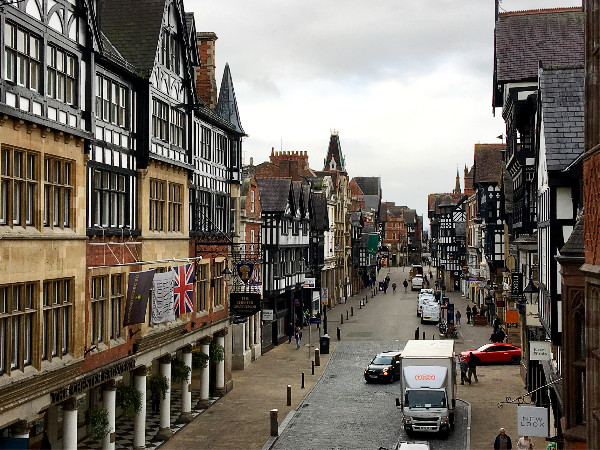
The gloomy, wet weather stayed with us, but nothing could dampen my enthusiasm for the wonderful architecture of the town of Chester, Cheshire. Everywhere we looked, there were rows of black and white, half-timbered buildings.
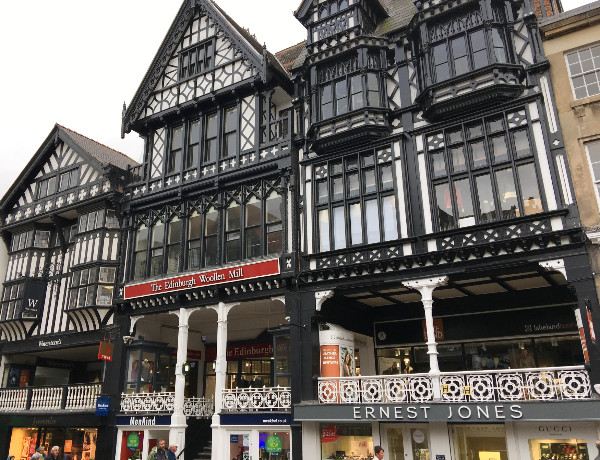
In fact, these two-tiered arcades were commonly known as The Rows. This one was on Eastgate Street, a veritable treasure trove of such buildings. From hairdressers and clothing shops, to cafés and restaurants, they brightened an otherwise dismal day.
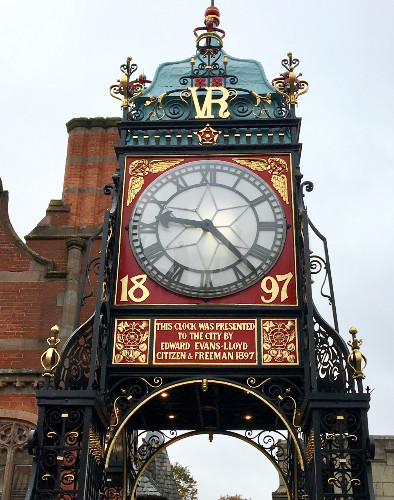
Eastgate Street also boasts this wonderfully adorned clock which stands on a red brick gate over the site of the original entrance to the Roman fortress of Deva Victrix, which was first established in 70AD, but was rebuilt several times over the next couple of centuries. A Roman Amphitheatre and a shrine to Minerva also remain within the city. Climbing the stairs to Eastgate Clock gave us a great vantage point for photos along Eastgate Street.
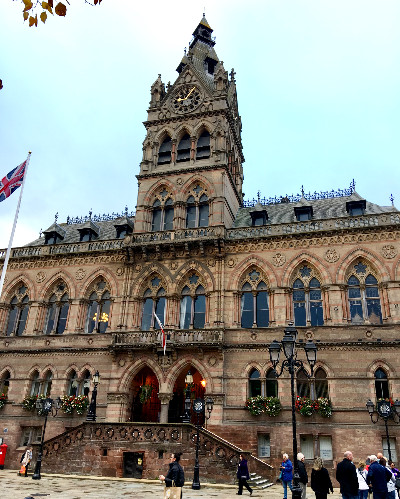
Around the corner in Northgate Street stands the Chester Town Hall, established in 1864 in an ornate Gothic Revival style. While today’s council work is no longer carried out within, the building remains available for public functions. Another building we visited is the Chester Cathedral, a former Benedictine Abbey, dating from the 10th century,
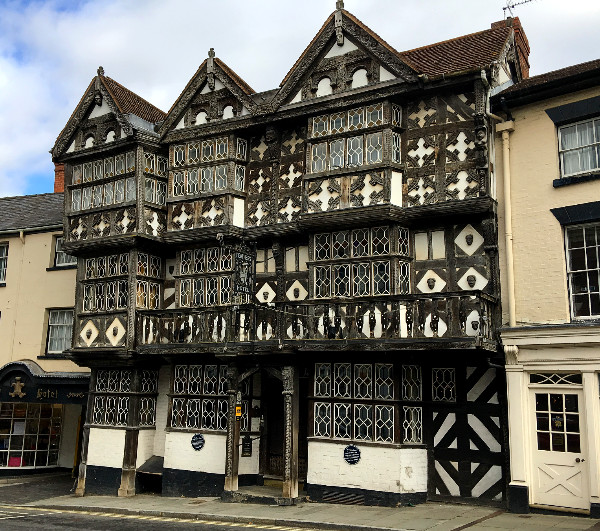
Then it was off to the bustling market town of Ludlow in Shropshire, an hour and a half away, for more photos of beautiful old buildings. The Feathers Hotel is one of Ludlow’s best examples of historic buildings, built in 1619 and converted into an inn in 1670. The timber façade is ornately carved, featuring motifs of the Prince of Wales’ feathers, from which the hotel’s name derives.
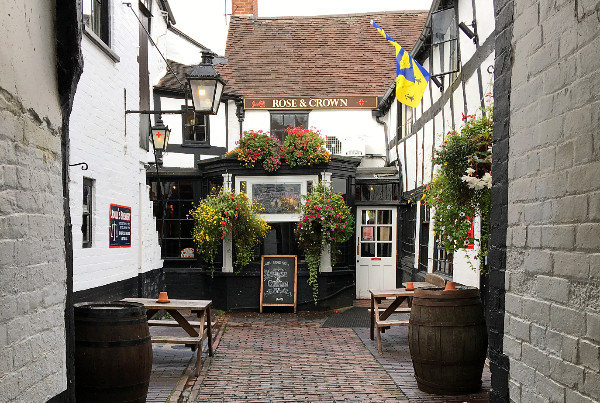
Our choice as a lunch venue was the less elaborate Rose and Crown, Ludlow’s oldest pub, functioning as an ale house on this site in 1102. Carefully restored, it features an open fireplace and exposed dark timber beams, making it a homely place to enjoy a typical English pub meal, such as my steak and kidney pie.

Standing on a promontory overlooking the River Teme are the ruins of medieval Ludlow Castle, one of the first stone castles built in England, having been established soon after the Norman Conquest in 1066. It is open to the public for a fee and includes a restored chapel used now for weddings, a gift shop, restaurant and café. Three apartments in the former Castle House are also available for self-catering accommodation. The grounds of the castle are frequently the venue for concerts and plays.

We then continued on back into Wales en route to the capital city of Cardiff (Caerdydd). The two hour journey took us through the well-known Brecon Beacons National Park, home of the Welsh mountain pony, and the Valleys, where much of Wales’ coal mining took place. On the way we passed this old stone aqueduct, just outside the town of Merthyr Tydfil.

So, from one castle to another, the Cardiff castle boasts a 2,000 year heritage, starting with the Romans, whose walls can still be seen. Extensions and fortifications continued over the years until, in the late 1800s, Gothic towers and lavish interiors were created. These days, tours may be taken and rooms hired for weddings and corporate functions.
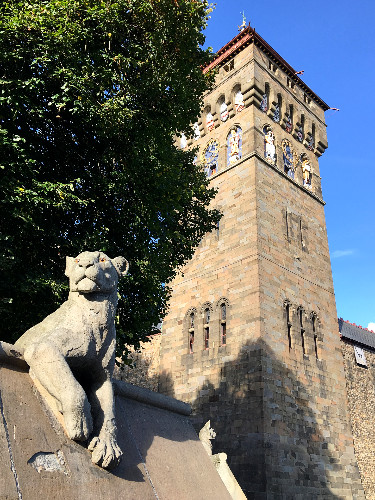
The castle’s garden walls facing Castle Street are adorned with sculptures in stone of various animals, including a bear, two lions, apes, a seal, a lioness, a lynx, a wolf and a hyena. They all originally had glass eyes and the sandstone was painted, but this has weathered away. The Clocktower is also quite unusual. The faces of the clock are flanked by 10ft (3m) tall statues representing the principal planets with their respective zodiac on the pedestals.
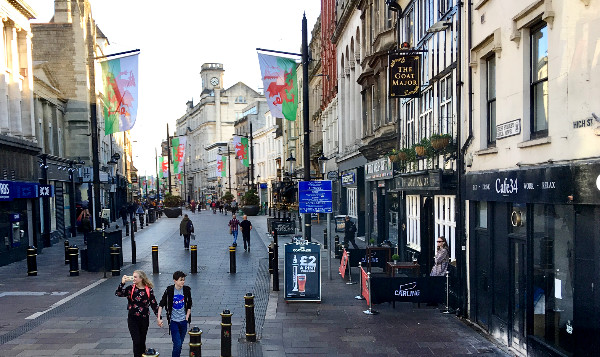
Directly opposite the main castle entrance, High Street is the heart of the city, with pubs, restaurants and shopping arcades. We whiled away some time with our fellow travellers in The Goat Major pub before being whisked away to a special dinner in nearby Cowbridge which promised traditional Welsh food and musical entertainment. A great finish to a long but enjoyable day.






